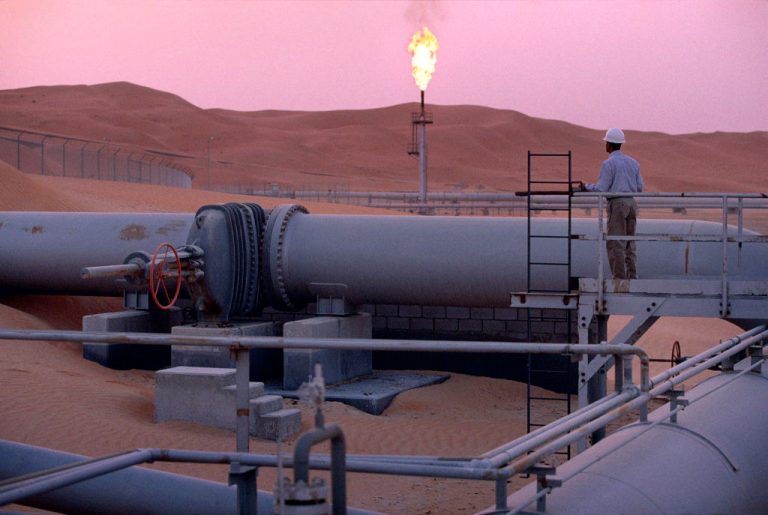While Saudi Arabia is posturing that it may begin accepting the yuan instead of the U.S. dollar on at least a portion of its oil sales to China amid intensifying geopolitical conflicts, economic and political relations between the three nations, including conflict-embroiled Russia, may make the switch less than simple.
The gauntlet was dropped via a March 15 exclusive in the Wall Street Journal, relying on “people familiar with the matter,” who stated the Saudis are “in active talks with Beijing to price some of its oil sales to China in yuan.”
The Journal noted that the development is not entirely new, however, as China, who purchases 25 percent of Saudi oil exports, has been courting the OPEC+ cartel member to accept the yuan for at least six years.
RELATED READING:
- Threat of Global War Looming as NATO Mobilizes After Russia Strikes Ukraine Training Facility
- Meanwhile In Hong Kong: COVID Cases and Deaths Touch the Sky
- More Bad News for Consumers: Visa and Mastercard Will Hike Merchant Fees In April
However, WSJ says the courtship has “intensified” in recent times due to geopolitical frictions arising from the Biden administration’s lack of support for Saudi intervention in the Yemen civil war and renewed talks with Iran to restart its nuclear program.
Success
You are now signed up for our newsletter
Success
Check your email to complete sign up
Notably, the chatter comes just a day after Saudi state-run oil company Aramco announced a decision to enter into a joint partnership with Chinese Communist Party (CCP) enterprises to construct a $10 billion refinery in Northeastern China.
When it comes to oil refineries, the Saudis stand with one foot in the American boat and the other in China’s. Aramco also owns the largest refinery in the United States in the form of Houston-headquartered Motiva, which provides more than 2,500 jobs and produces more than 600,000 barrels of oil per day.
A report issued by the Saudi General Authority for Statistics in January also revealed that China was the nation’s top trade partner in all categories in November of 2021, amounting to 17.2 percent of exports behind India and Japan at 11.6 and 9.6 percent respectively.
As the conflict between the Russian Federation and Ukraine has continually escalated since beginning on Feb. 23, heavy sanctions and cancel culture from the Biden administration and the International Rules Based Order have increasingly pushed Russia towards the CCP and PRC President Xi Jinping while Ukraine is bolstered by the U.S.-backed NATO.
The polarizing developments are notable in the context of the Saudi’s posturing towards the yuan, as the Arab nation entered into a military cooperation agreement with Russia in August of 2021.
Nonetheless, Saudi Arabia also remains the United States’ top customer for foreign arms sales, topping $100 billion USD, according to a December of 2020 Department of State press release.
The relationship between the Saudis and the U.S. military industrial complex is prominent in light of a $1 billion investment in the country by Lockheed Martin to “localise military manufacturing” and to “to support Saudi Arabia’s local industry” announced during the heat of the Russia-Ukraine conflict on March 8.
WSJ noted that while U.S. imports of Saudi oil have quartered from more than 2 million per day in the 1990s to approximately 500,000 by the end of 2021, China currently imports 1.76 million barrels per day, and Russia is no laggard at 1.6 million.
Unnamed Biden administration officials downplayed the warning from Riyadh as both “highly volatile and aggressive” and “not very likely,” noting the country had expressed similar economic hostilities amid tensions with Washington in the past.
The Journal also stated that aides to Saudi Prince Mohammed have cautioned the monarch that trading dollars for yuan poses significant risks, not only because of the CCP’s strict central control over its currency, but because the Saudi riyal is pegged to the USD while many of the country’s revenue streams are held in U.S. Treasury bonds.
Russian media outlet RT reported on the bravado in a positive light for its potential negative effect on the U.S., stating, “Such a move could further marginalize the petrodollar paradigm that has controlled the global financial system for over half a century, placing the dollar’s status as the international reserve currency at risk.”
The article is apt to reflect Moscow’s position on the developments as it states further, “The western economy’s moves to shut Russia out of the global financial system have countries like China, already on several sanctions blacklists, hunting around to ensure what happened to Russia cannot happen to them.”
“Attempting to sell oil in non-dollar currencies used to be a bad omen for a nation – Iraq, Libya, Syria, and Iran have all made moves away from the dollar, only to be strictly punished for their independence by the US military,” RT continued.

















